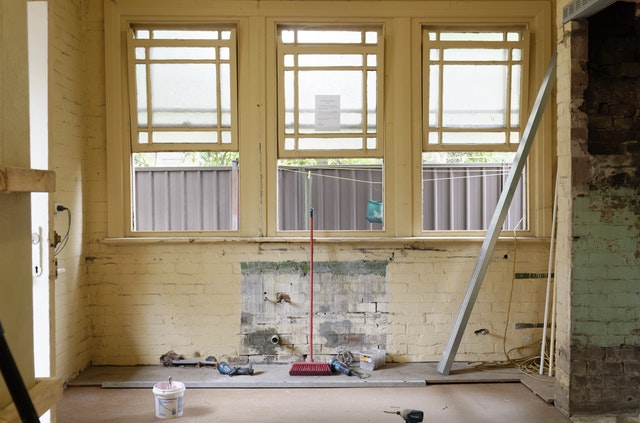Buying, renovating and then reselling houses can be a profitable undertaking. But finding a loan to fund such a project is much different than getting a conventional loan for a personal home. Here, Realtor.com discusses four different fix-and-flip loans that can be used to purchase and renovate distressed properties, each of which presents its own set of qualification requirements and pros and cons.
-
Hard-money loan
Sometimes times called “rehab loans,” this short-term option is intended for real estate investments. These are issued by private lenders, including an individual, a group of investors or a licensed mortgage broker who uses personal funds to extend the cash. Hard-money loan terms usually are much shorter than traditional mortgages. Six months to one year is most common, but they can go up to five years. Interest rates are considerably higher, typically ranging from 12 percent to 21 percent. Most hard-money lenders also charge 3 to 6 points upfront, where 1 point equals 1 percent of the loan. Down payment requirements for hard-money loans vary as well. Expect to receive about 60 percent to 75 percent of the property value you intend to purchase. For example, if you’re considering a $200,000 property, the most you’ll probably be allowed to borrow would be $150,000, meaning you’d have to pay $50,000 upfront. However, hard-money lenders generally are more willing to accommodate individuals with lower credit scores (as low as 550). There’s also much less paperwork than a traditional loan, so the process is quicker—sometimes as fast as one week. Because the purchased home serves as collateral, hard-money loans are best suited for people who have flipped at least two or three homes.
-
Cash-out refinance
This is a great option if the value of your primary residence has increased because you can tap the equity in your home by refinancing your mortgage for more than you currently owe and take the difference in cash. As the name implies, you are in effect “cashing out” some of the equity in your home to pay for something else. Your new loan will be the amount you still owe on your mortgage, plus the cash you wanted to acquire. So, if you had a $300,000 loan on which you still owed $200,000, that means you had $100,000 in equity in your house. You could cash out $25,000 of that equity and obtain a new mortgage for $225,000 to replace your existing $200,000 loan and then put that $25,000 toward your house flip. You need a minimum 640 credit score, a maximum 45-percent debt-to-income ratio, and at least 30 percent to 40 percent of the equity in your existing home to qualify for most cash-out refinance loans. Because it’s part of a mortgage, however, you’ll typically get a better interest rate than if you were to use a credit card or hard-money loan to fund the same purchase. Note: You’ll have to pay closing costs, which average about 3 percent to 6 percent of the total loan, and if you’re refinancing to a higher mortgage rate, you could end up paying more money in interest on your loan in the future.
-
Home equity loan or line of credit
If you’ve built equity in your primary residence, you could tap some of it using a home equity loan or home equity line of credit. Both options allow you to borrow money using the equity in your home as collateral. The big difference is a home equity loan provides you with the cash up-front, and you pay monthly installments during the length of the loan (as you do on your first mortgage). With a HELOC, you access the money in small increments during the life of the loan. Since you’re getting all of the cash up-front, a home equity loan usually is a better financing option when buying and flipping a house. The interest rate also is fixed and fairly low compared with hard-money loans or credit cards (currently around 6 percent), and any interest you pay on the loan is tax-deductible with certain limits. Most mortgage lenders will let you borrow up to 80 percent of your home’s equity on a second mortgage.
-
Investment line of credit
An investment line of credit (or acquisition line of credit) resembles a HELOC, except it’s issued solely for buying investment properties. With this short-term financing option, loans typically last from about 18 to 24 months, and you can borrow cash as needed, up to a predetermined loan limit. These loans are best suited for people who are experienced house flippers since borrowers are underwritten and approved based on their demonstrated record of owning or flipping investment properties, and their financial wherewithal. Generally, you can obtain an investment line of credit in as few as three weeks, in amounts ranging from $1 million to $50 million. Interest rates on these loans typically run from 5 percent to 8 percent.



